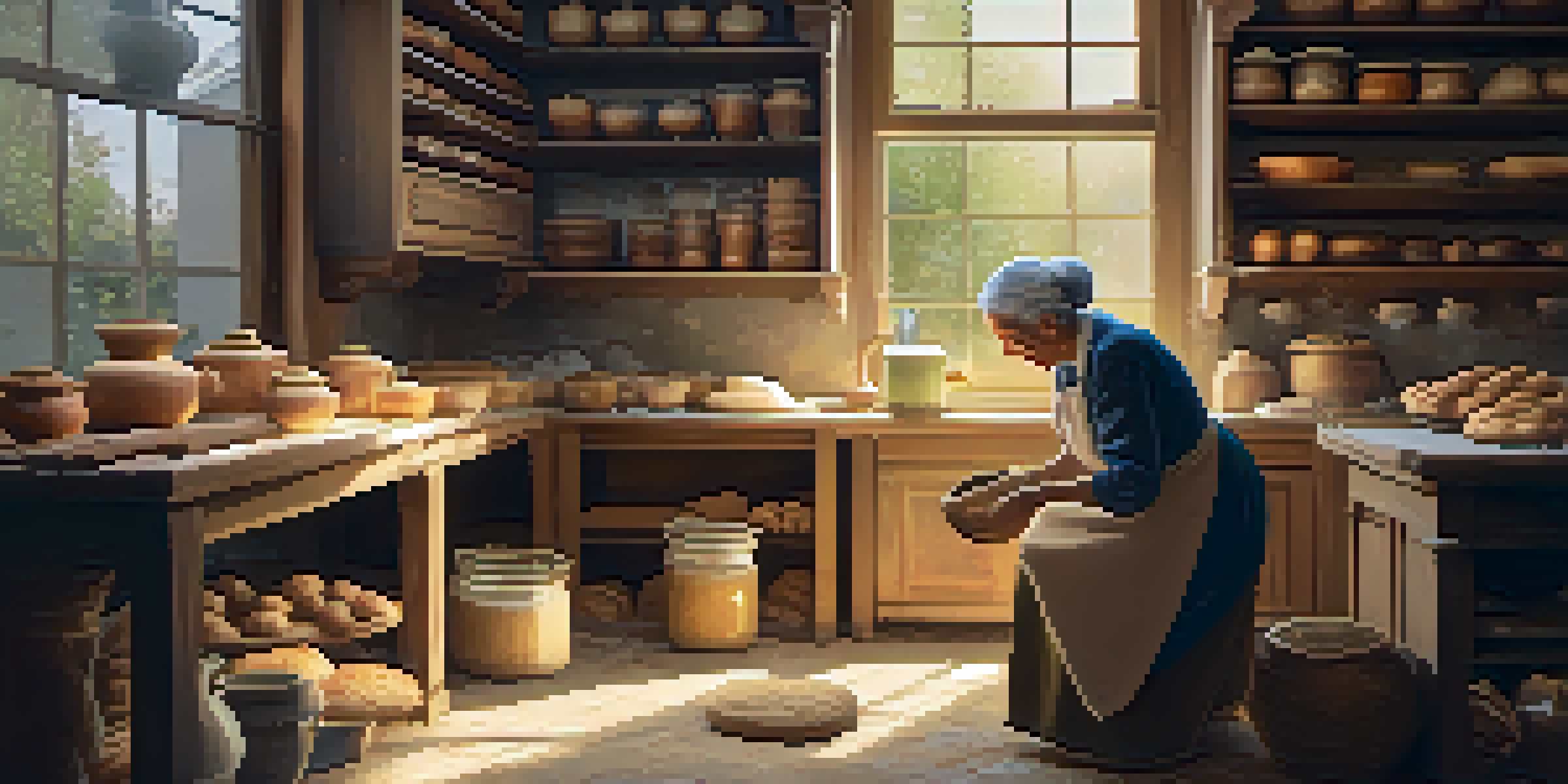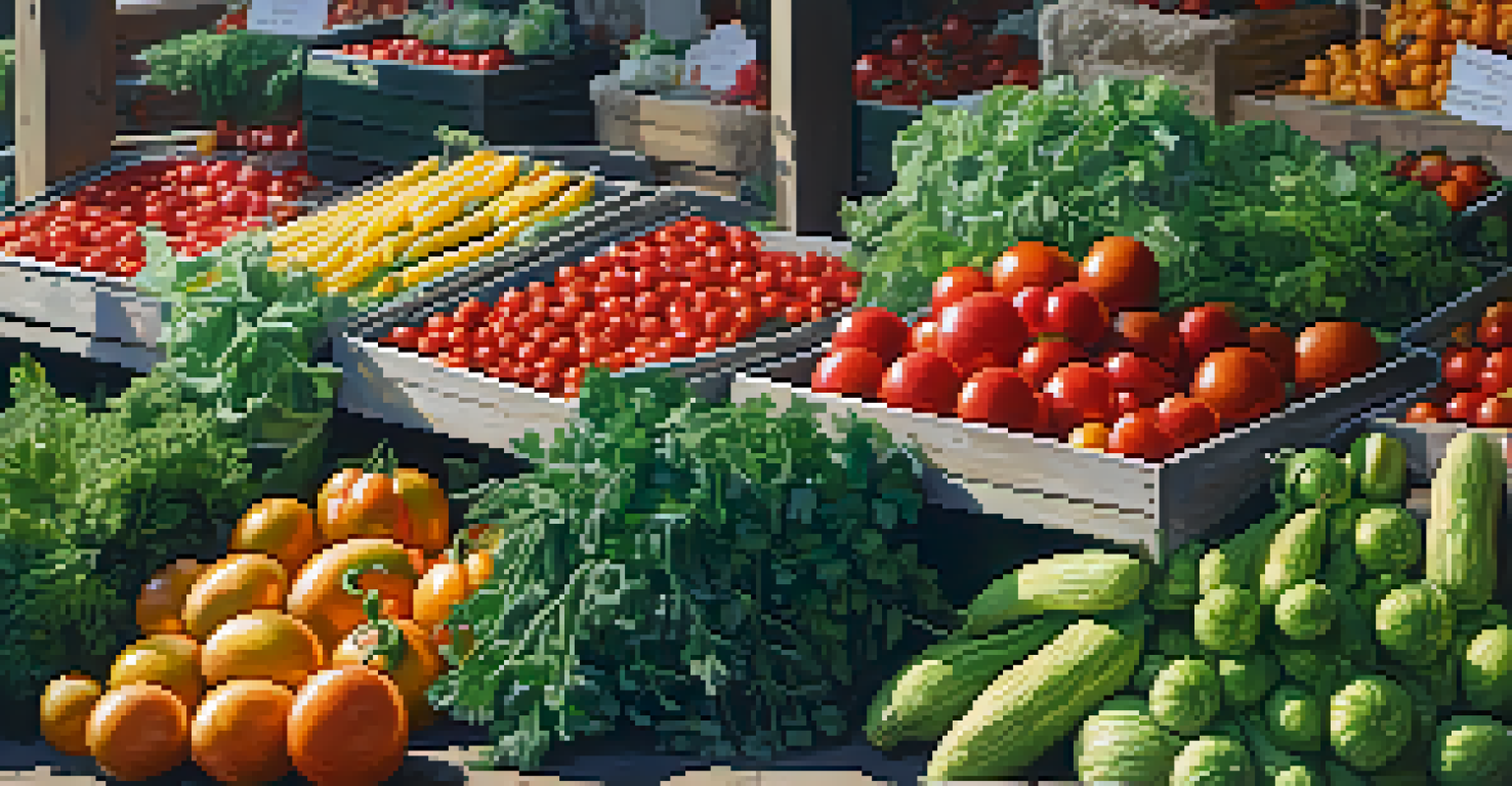Reviving Forgotten Recipes: A Journey Through Culinary History

The Allure of Forgotten Recipes Through Generations
Every recipe tells a story, carrying with it the essence of a time long past. Forgotten recipes often reflect the culture and traditions of their era, giving us a glimpse into the daily lives of our ancestors. They remind us of the ingredients that were once staples, but have faded into obscurity as culinary trends shifted.
Cooking is like love; it should be entered into with abandon or not at all.
As we delve deeper into these old recipes, we uncover not just ingredients but also the emotions tied to them—family gatherings, celebrations, and even hardships. For instance, the revival of a traditional bread recipe can take us back to a grandmother’s kitchen, filled with warmth and the aroma of freshly baked loaves. This connection to our past makes rediscovering these culinary treasures even more special.
In today’s fast-paced world, there’s a growing desire to reconnect with our heritage through food. This journey into forgotten recipes is more than just cooking; it’s about embracing the stories and traditions that shape our culinary identity.
The Impact of Industrialization on Culinary Practices
The Industrial Revolution marked a significant turning point in food production, leading to the mass production of ingredients and the rise of convenience foods. While this made food more accessible, it also resulted in the loss of many traditional cooking methods and recipes. The focus shifted from quality to quantity, and many forgotten dishes fell by the wayside.

As families became busier, the art of slow cooking and the use of seasonal ingredients diminished. Recipes that required time and patience were often replaced with quick fixes, leading to a disconnect from the natural flavors and heritage of cooking. This shift not only affected what we eat but also how we relate to food and its preparation.
Culinary Heritage Through Recipes
Forgotten recipes serve as a vital link to our cultural heritage, preserving the stories and traditions of our ancestors.
Today, there’s a resurgence in interest toward slow food movements and farm-to-table practices. Reviving forgotten recipes is a way to challenge this industrialization and return to the roots of cooking, fostering a deeper appreciation for the food we consume.
Exploring Regional Variations of Forgotten Dishes
Every region has its own set of forgotten recipes that speak to the local culture, climate, and available ingredients. For example, in the Southern United States, dishes like spoon bread or chess pie are often overlooked in modern cooking. Unearthing these recipes not only highlights regional flavors but also preserves the history of local communities.
Food brings us together as a family and is a way to share our culture and history.
As we explore these regional variations, we often find that the same dish can have different names and ingredients depending on where it’s prepared. This diversity enriches our culinary landscape and encourages us to appreciate the uniqueness of our heritage. It's fascinating to see how a simple dish like porridge can be transformed into various forms across different cultures.
By reviving these regional recipes, we not only keep culinary traditions alive but also encourage a sense of pride in local heritage. This exploration becomes a celebration of our shared history, connecting us with the past through each bite.
Seasonal Ingredients: The Heart of Forgotten Recipes
At the core of many forgotten recipes lies the use of seasonal ingredients, which were once vital to survival. These recipes often depended on what was readily available, making them a reflection of the local environment and agricultural practices. Rediscovering these recipes encourages a return to eating with the seasons, fostering a deeper respect for nature’s cycles.
For instance, a recipe for pickled vegetables from a bygone era not only showcases preservation techniques but also highlights the bounty of summer harvests. This connection to the seasonality of ingredients can enhance our cooking and deepen our appreciation for what we eat. It’s a reminder that food is more than just sustenance—it’s about honoring the land.
Industrialization's Culinary Shift
The rise of convenience foods during industrialization has led to the loss of traditional cooking methods and recipes.
By embracing seasonal cooking, we can breathe new life into forgotten recipes while also supporting local farmers and sustainable practices. This approach invites us to create meals that are not only delicious but also meaningful and environmentally conscious.
Reviving Forgotten Recipes in Modern Kitchens
Bringing forgotten recipes back to life in modern kitchens may seem daunting, but it’s easier than it appears. With the wealth of information available online, finding historical recipes has never been more accessible. Social media platforms and food blogs have become treasure troves for those looking to explore and share these culinary gems.
As we attempt to recreate these dishes, we often encounter challenges, whether it’s sourcing ingredients or adapting techniques. This process, however, allows for creativity and personalization, transforming a traditional dish into something uniquely ours. It’s a delightful journey that combines history with innovation, inviting us to experiment and have fun in the kitchen.
Moreover, sharing these revived recipes with friends and family can spark conversations and connections, allowing us to pass on the stories behind each dish. In doing so, we not only keep the recipes alive but also foster a sense of community and appreciation for our culinary heritage.
The Role of Food Communities in Recipe Revival
Food communities play a crucial role in the revival of forgotten recipes, bringing together individuals who share a passion for culinary history. These communities, whether online or in-person, provide a platform for enthusiasts to exchange ideas, share recipes, and inspire one another. They foster a collaborative spirit that encourages exploration and experimentation.
Joining a food community can also provide access to resources, such as workshops or cooking classes that focus on traditional techniques. These experiences allow participants to not only learn but also to appreciate the craftsmanship behind forgotten recipes. It’s a wonderful way to connect with others while diving deeper into the world of culinary traditions.
Community Efforts in Recipe Revival
Food communities play a crucial role in reviving forgotten recipes, fostering collaboration and appreciation for culinary traditions.
As more people engage with food communities, there’s a growing movement toward preserving and celebrating culinary history. Together, we can ensure that these recipes are not lost to time but instead thrive within our kitchens and hearts for generations to come.
The Future of Forgotten Recipes: A Culinary Legacy
The future of forgotten recipes is bright, as more individuals and communities recognize the value of preserving culinary traditions. By reviving these dishes, we not only celebrate our heritage but also create a legacy for future generations. Each recipe becomes a bridge between the past and present, allowing us to share our stories through food.
As we look ahead, it’s essential to continue exploring and documenting these forgotten recipes. This can be done through cookbooks, blogs, or even community events that celebrate local culinary history. By keeping these recipes alive, we ensure that the flavors and traditions of our ancestors are passed down.

Ultimately, the journey of reviving forgotten recipes is about more than just food; it’s about connection, identity, and the stories that bind us together. Together, we can foster a future where culinary history is not just remembered but celebrated, creating a rich tapestry of flavors for all to enjoy.